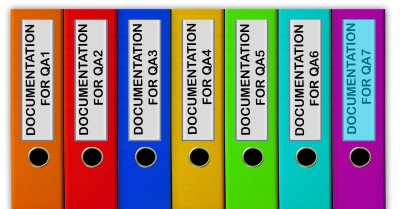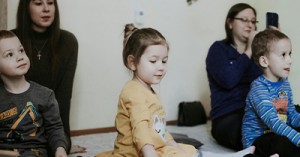Quality Area 7 - Governance and Leadership enables services to achieve the best outcomes for children and their families by creating a service with skilled and engaged workforce, sound administrative and risk management systems, well documented policies and procedures, and a safe and healthy learning environment for children.
7.1 – Governance supports the operation of a quality service.
7.1.1 - A statement of philosophy guides all aspects of the service’s operations.
Documentation to support this includes:
- the service’s statement of philosophy
- documentation relating to the service’s review of its statement of philosophy (such as staff meeting minutes)
- evidence that the service’s statement of philosophy is included in the induction process for all staff members and in the enrolment and orientation process for families
7.1.2 – Systems are in place to manage risk and enable the effective management and operation of a quality service.
Documentation to support this includes:
- records available and kept for the required length of time
- evidence of current public liability insurance (this does not apply if the
- insurance is provided by a state or territory government)
- a Quality Improvement Plan
- child assessments
- an incident, injury, trauma and illness record
- a medication record
- the child attendance record
- the child enrolment record
- the record of the death of a child while being educated and cared for by the service
- a record of the service’s compliance history
- a record of the responsible person in day-to-day charge
- the name of the person designated as the educational leader
- the nominated supervisor’s written consent to the nomination
- the record of volunteers and students
- staff records
- the names of responsible persons for each time that children are being educated and cared for by the service
- the record of educators working directly with children information displayed in staff areas about the required notifications
- records of notifications to the Regulatory Authority
- records held by the regulatory authority in relation to complaints against the service that allege a breach of legislation or a serious incident
- a documented grievance and complaints management procedure
- evidence that grievances and complaints are investigated and documented in a timely manner
- evidence that complaints lead to amendments to policies and procedures as required
- information for families on how complaints and grievances are made and how they are managed by the service.
7.1.3 - Roles and responsibilities are clearly defined, and understood, and support effective decision-making and operation of the service.
Documentation to support this includes:
- the service’s documented induction procedure
- information provided to all staff members about the service and their role, such as position descriptions
7.2 – Effective leadership builds and promotes a positive organisational culture and professional learning community.
7.2.1 - There is an effective self-assessment and quality improvement process in place.
Documentation to support this includes:
- the service’s Quality Improvement Plan displayed so that families and staff can view the current goals and strategies for quality improvement
- the documented process for ongoing self-assessment, planning and review against the National Quality Standard
- systems for collecting information from families, children and staff members about their perceptions of the service
7.2.2 - The educational leader is supported and leads the development and implementation of the educational program and assessment and planning cycle.
Documents to support this includes:
- designation of the educational leader in the staff record
- documentation of the educational leader providing feedback and guidance to educators about the assessment and planning cycle
- reflective practice discussions that critically examine current practice and that lead to quality improvement.
7.2.3 - Educators, co-ordinators and staff members’ performance is regularly evaluated and individual plans are in place to support learning and development.
Documents to support this includes:
- individual performance plans for educators, coordinators and staff members
- documented position descriptions for educators, educational leaders, coordinators and staff members that clearly outline the responsibilities of the position, clearly explain the approved provider’s expectations, are used as the basis for monitoring and reviewing the performance of educators, educational leaders, co-ordinators and staff members
- evidence of participation by educators, educational leaders, co-ordinators and staff members in professional development activities to update their knowledge and skills
- evidence that performance reviews for all educators, educational leaders, coordinators and staff members are conducted regularly and include a process for reviewing and updating professional development plans based on an evaluation of their professional strengths, interests and goals
For a list of outcomes under each element: How To Achieve Quality Area 7







 Here is the list of the EYLF Learning Outcomes that you can use as a guide or reference for your documentation and planning. The EYLF
Here is the list of the EYLF Learning Outcomes that you can use as a guide or reference for your documentation and planning. The EYLF The EYLF is a guide which consists of Principles, Practices and 5 main Learning Outcomes along with each of their sub outcomes, based on identity,
The EYLF is a guide which consists of Principles, Practices and 5 main Learning Outcomes along with each of their sub outcomes, based on identity, This is a guide on How to Write a Learning Story. It provides information on What Is A Learning Story, Writing A Learning Story, Sample
This is a guide on How to Write a Learning Story. It provides information on What Is A Learning Story, Writing A Learning Story, Sample One of the most important types of documentation methods that educators needs to be familiar with are “observations”. Observations are crucial for all early childhood
One of the most important types of documentation methods that educators needs to be familiar with are “observations”. Observations are crucial for all early childhood To support children achieve learning outcomes from the EYLF Framework, the following list gives educators examples of how to promote children's learning in each individual
To support children achieve learning outcomes from the EYLF Framework, the following list gives educators examples of how to promote children's learning in each individual Reflective practice is learning from everyday situations and issues and concerns that arise which form part of our daily routine while working in an early
Reflective practice is learning from everyday situations and issues and concerns that arise which form part of our daily routine while working in an early Within Australia, Programming and Planning is reflected and supported by the Early Years Learning Framework. Educators within early childhood settings, use the EYLF to guide
Within Australia, Programming and Planning is reflected and supported by the Early Years Learning Framework. Educators within early childhood settings, use the EYLF to guide When observing children, it's important that we use a range of different observation methods from running records, learning stories to photographs and work samples. Using
When observing children, it's important that we use a range of different observation methods from running records, learning stories to photographs and work samples. Using This is a guide for educators on what to observe under each sub learning outcome from the EYLF Framework, when a child is engaged in
This is a guide for educators on what to observe under each sub learning outcome from the EYLF Framework, when a child is engaged in The Early Years Learning Framework describes the curriculum as “all the interactions, experiences, activities, routines and events, planned and unplanned, that occur in an environment
The Early Years Learning Framework describes the curriculum as “all the interactions, experiences, activities, routines and events, planned and unplanned, that occur in an environment


